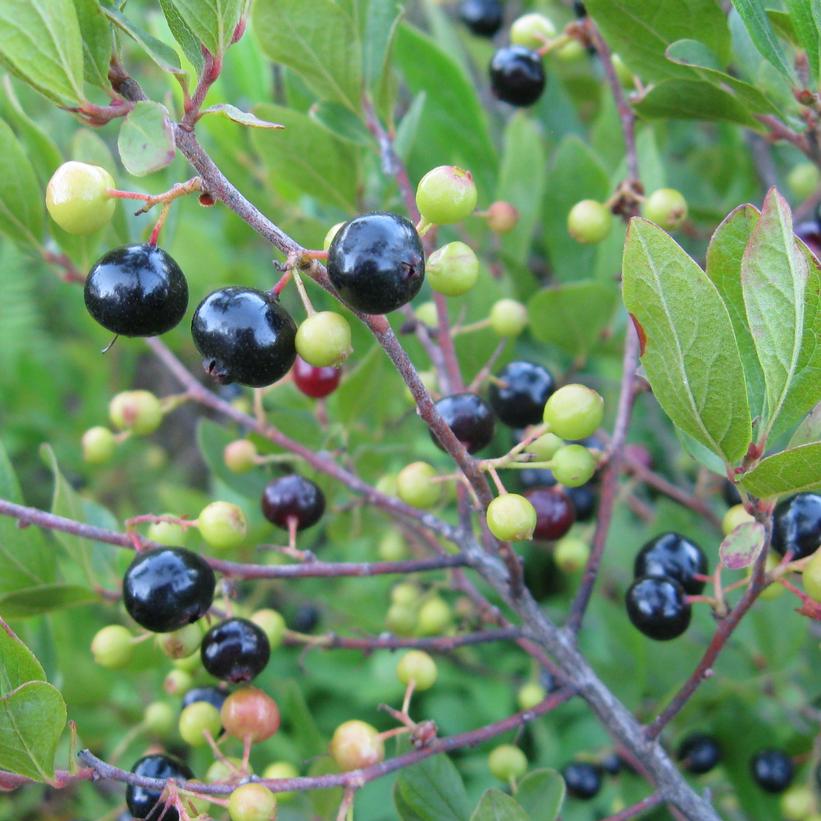« Previous Plant | Next Plant »
Gaylussacia baccata
Black Huckleberry
- » The berries make this a valuable plant for wildlife
- » Mockingbirds, catbirds and robins nest in huckleberries
- » Provides shelter for turkey, ruffed grouse, bobwhite quail, mourning dove, mockingbird, catbird, robin and more
- » Nectar source for butterflies, bumblebees and native bees
- » Delicious berries can be made into pie and preserves
- » Turns beautiful shades of orange and crimson in the fall

- Category:Shrub
- Breeder:American Beauties Native Plants
- Hardiness Zone:4-7
- Height:1-3 ft
- Spread:1-3 ft
- Bloom Color: Pink Shades, Red Shades, White Shades
- Foliage Color: Green Shades
Give huckleberries a bit of room and they will spread to form a thicket just 3 feet tall. Many species of butterflies visit the bell-shaped flowers in springtime. The flowers are self-fruitful but tend to produce more fruit if two or more are planted together. The purple-black berries ripen in late summer and early fall to the delight of humans and a huge range of birds and other beneficial wildlife. The dense branching provides shelter and nesting to a wide variety of birds. Small, oval leaves turn beautiful shades of orange and crimson in the fall.
Foliage Color
| • | Green |
Programs
| • | American Beauties Native Plants® |
Season of Interest (Foliage)
| • | Summer |
Growing & Maintenance Tips for Gaylussacia baccata
Plants prefer partial sun, average to dry conditions, and an acidic soil that is sandy or rocky. Plants that are grown in too much shade may fail to produce flowers and fruit. The flowers are self-fertile, but fruit production is better when there is cross-pollination.
